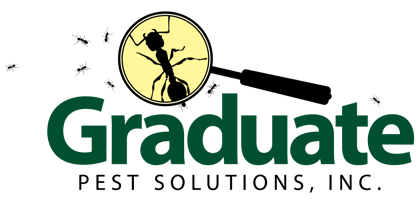Get Ready for a Pest-Free Spring
It’s time to prepare your home and garden for a season of renewal! However, spring also brings the reawakening of pests that can invade your space. Implementing proactive measures now can save you from dealing with unwanted critters later. Here’s how to prepare your home and garden effectively.
Inspect Your Home's Exterior for Vulnerabilities
Winter can leave your home’s exterior vulnerable to pest invasions. Snow, ice, and severe weather can cause damage, leaving small cracks and fissures in your home’s exterior, roof, windows, siding, and foundation. These openings can become gateways for pests such as carpenter ants and termites. Begin your spring preparations by conducting a thorough inspection of your home’s exterior. Seal any cracks or gaps you find, paying extra attention to window caulking, which is prone to deterioration. Additionally, ensure that vents are equipped with appropriate screens to prevent pest entry.
Taking the time to inspect and repair these potential entry points not only helps in pest prevention but also contributes to the overall maintenance and energy efficiency of your home.
Manage Your Yard's Vegetation Wisely
Your yard’s vegetation can be both a beautiful asset and a potential pest magnet. Winter can take a toll on trees and shrubs, leaving behind dead branches and debris, which can attract pests. Clear away any dead shrubbery and fallen branches to eliminate potential hiding spots for insects.
Moreover, trim back any shrubs or branches that are touching your home’s exterior. This reduces the pathways pests can use to enter your home. A well-maintained yard not only enhances your home’s curb appeal but also acts as a frontline defense against pest invasions.
Relocate Firewood to Prevent Pest Havens
If you’ve been enjoying cozy fires during the winter months, chances are you have a pile of firewood stacked up. However, firewood can become a breeding ground for pests like termites and ants. To prevent these pests from migrating into your home, store firewood at least 20 feet away from your house. Elevate the stack off the ground to reduce moisture accumulation, which attracts pests.
By relocating firewood, you are minimizing the risk of pests making their way indoors. This simple step can save you from dealing with significant pest problems down the line.
Identify and Address Potential Bee Hives Early
As temperatures rise, bees and other stinging insects become more active. Early spring is the perfect time to inspect your property for developing beehives or nests. Look for nests in the eaves and corners of your home, as well as in your attic and crawl spaces. If you discover a hornet, wasp, or yellowjacket nest, it’s best to call a pest control professional. These insects can be dangerous, especially if mishandled.
Early identification and removal of these nests can prevent more significant issues as the season progresses. Protecting your home from stinging insects ensures your outdoor spaces remain safe and enjoyable.
Perform Thorough Spring Cleaning for Pest Prevention
A comprehensive spring cleaning can significantly reduce the risk of pest infestations. Focus on eliminating potential food sources that attract pests. Clean your kitchen thoroughly, including behind and under appliances, as well as inside your pantry. Removing food particles that would have otherwise gone unnoticed can deter ants and other pests from invading your space.
In addition to the kitchen, inspect under sinks for leaks that can lead to mold and mildew, which are also attractive to pests. Ensure trash containers are securely sealed with locking lids to prevent pests from feasting. A clean and well-organized home is less inviting to unwanted critters.
Implement Integrated Pest Management Solutions
Beyond these preventive measures, consider implementing Integrated Pest Management (IPM) strategies. IPM involves using a combination of practices to control pests effectively while minimizing risks to people and the environment. This approach includes monitoring for pests, maintaining cleanliness, and using chemical controls as a last resort.
Consulting with a pest control professional can help you develop a customized IPM plan suited to your home’s specific needs. By integrating these solutions, you can maintain a pest-free environment and enjoy the beauty of spring without the hassle of unwanted guests.
Conclusion
Preparing your home and garden for spring involves more than just celebrating the end of winter. By taking proactive steps to inspect, clean, and maintain your property, you can significantly reduce the risk of pest infestations. From sealing exterior vulnerabilities to managing vegetation and implementing IPM strategies, these efforts will ensure a safe, pest-free environment, allowing you to fully enjoy the season of renewal.
YOU MAY ALSO LIKE
These related articles

